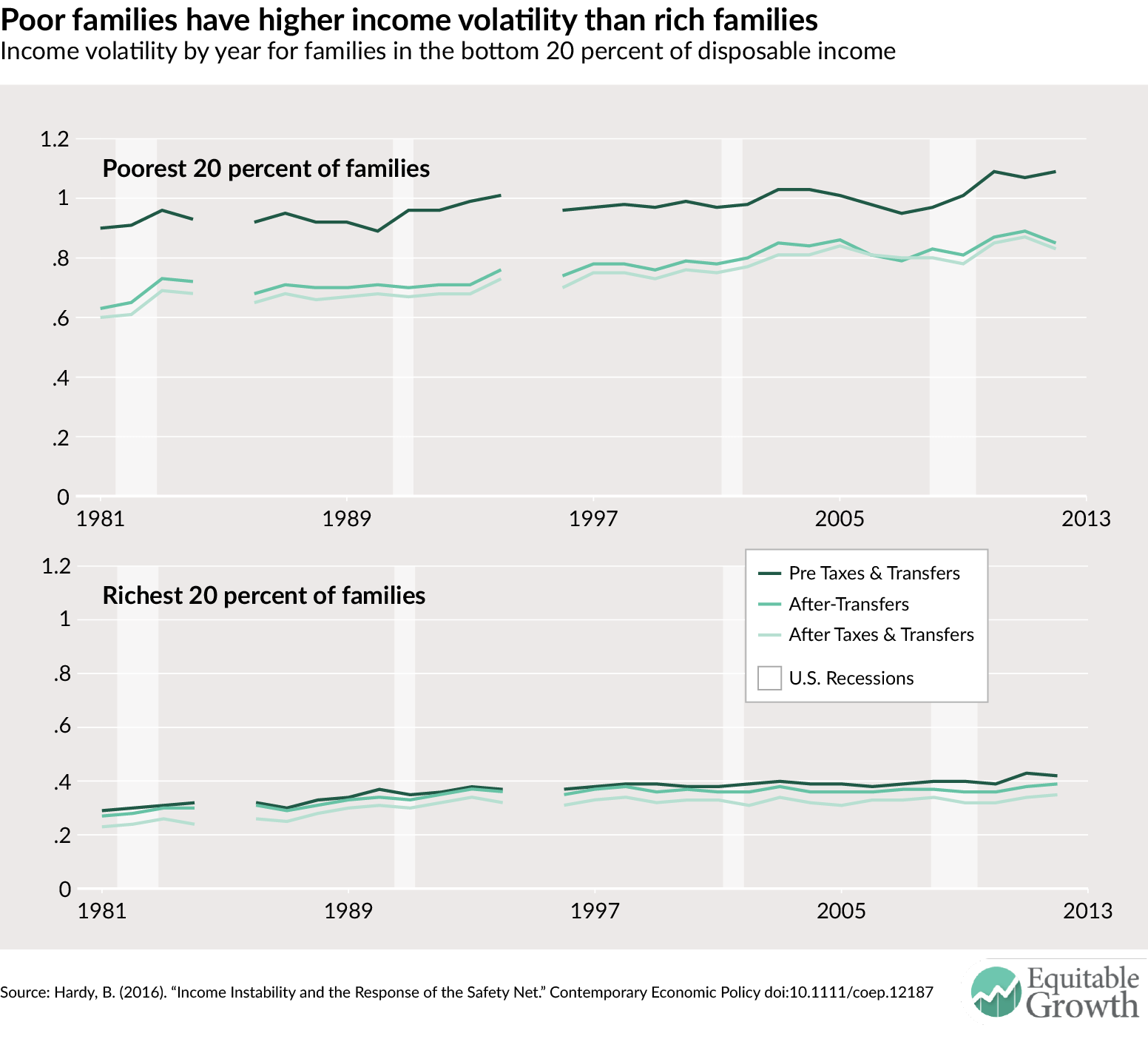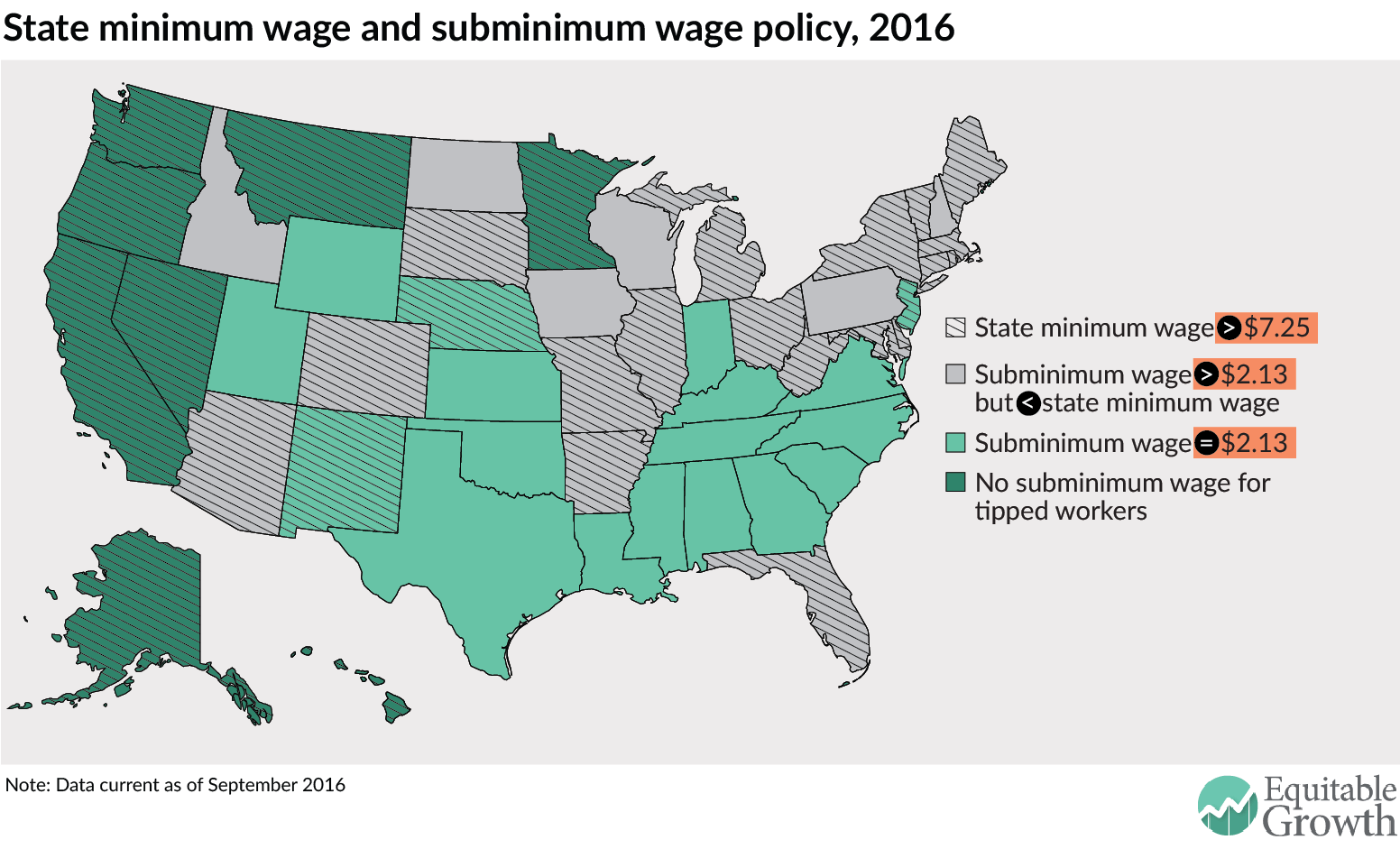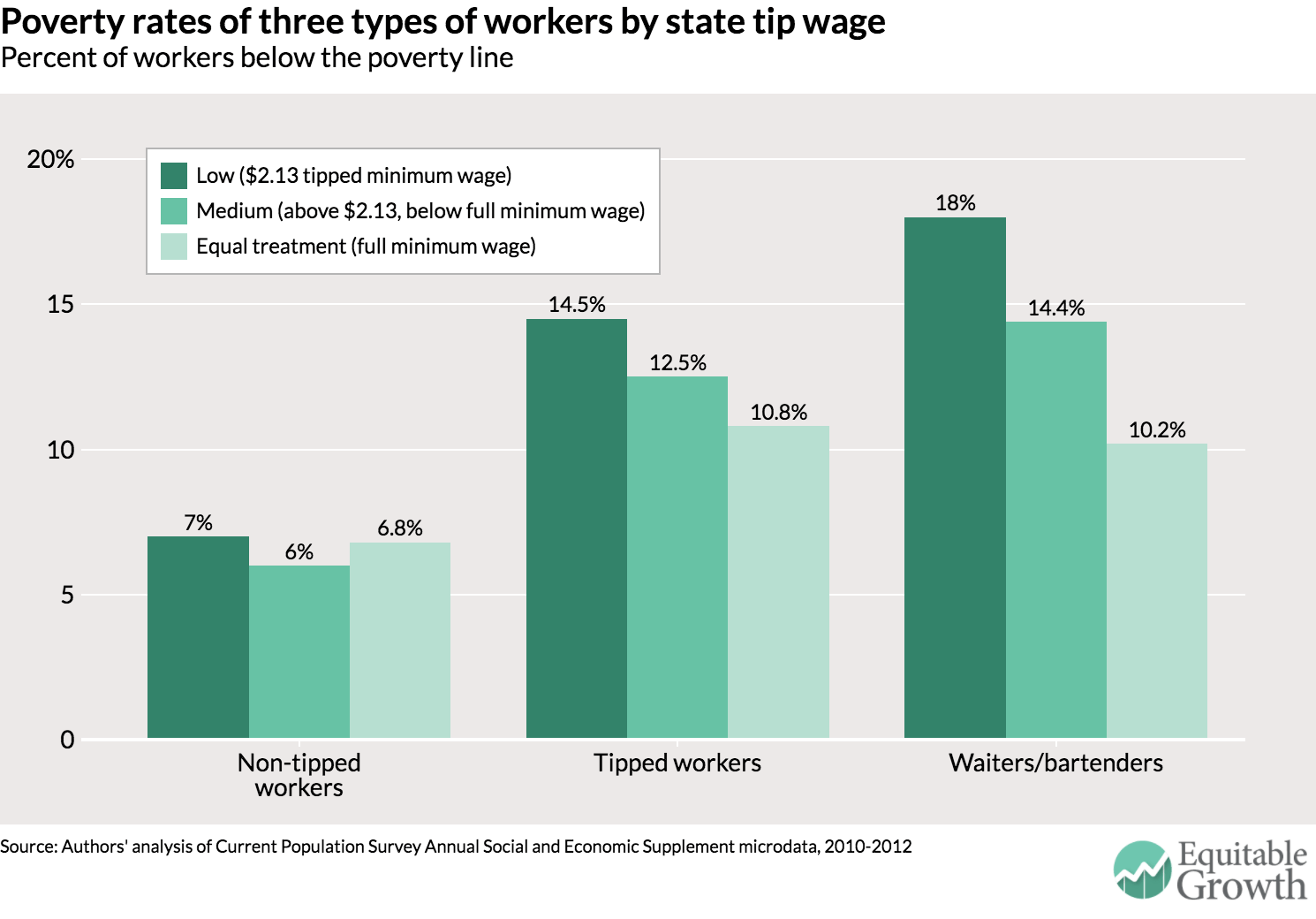
AP Images
About the author: David Autor is the Ford professor of economics at the Massachusetts Institute of Technology
Economists have long recognized that free trade has the potential to raise living standards in all trading countries. The logic is sound and simple. A given country, say the United States, will want to buy goods from another country, say China, only if the United States receives goods from China that are worth more to it than the goods it is trading in return. Similarly, China will want to trade with the United States only if the goods it receives in return are more valuable to it than the goods it is trading. That is, countries trade if they both view themselves as getting the better end of the bargain. How can it be that both get the better end of the deal? When the United States sells China civilian aircraft and buys Chinese-made apparel and consumer electronics, the United States and China each end up with a bundle of goods (aircraft, apparel, consumer electronics) that it prefers to the goods it had originally. In this sense, trade among nations is akin to a vast open-air market: each country displays its wares and makes mutually beneficial swaps with other countries.
Countries do not simply sell the surplus stuff that they have on hand, however; they make goods specifically for trading. And this adds to the gains from trade. Knowing that there is a vast world market, countries focus their resources on making the goods that they are best at making. They then swap these goods for the items that other countries are best at making. It is no accident, of course, that the United States is exporting aircraft and importing footwear. As a technologically advanced, high-skill nation, the United States can make aircraft better, cheaper, and faster than other countries. In economic lingo, it has a comparative advantage in producing aircraft. China, as a rapidly developing country with an abundance of capable but not (yet) highly educated workers, has a comparative advantage in making labor-intensive goods such as apparel, footwear, and assembled electronics. Thus, both gain from trade.
This logic offers a strong prima facie case for why policy makers should foster free trade. Lifting quotas and tariffs and removing artificial trade barriers abets national growth by lowering consumer and producer prices and permits countries to specialize in doing what they do best. Trade raises gross domestic product whether countries run trade deficits or surpluses; whether countries specialize in high-tech or low-tech goods; and whether trade is among rich countries (the United States and Germany), among poor countries (Zimbabwe and Mozambique), or among rich and poor countries (the United States and Bangladesh). It is not an overstatement to say that trade among consenting nations raises GDP in all of them.

Winners and losers
What applies to the welfare of a country in aggregate, however, does not necessarily apply to all of the citizens within a country. Consider again the case of aircraft and apparel. As the United States opened to trade with China, it began producing more planes and fewer articles of clothing than it otherwise would have done. Employment rose in the domestic aircraft industry, accordingly, and fell in the domestic apparel industry (again, relative to what would have occurred). If workers in apparel and aircraft had identical skillsets and, moreover, lived and worked in the same towns, then displaced apparel workers might quickly be rehired in aircraft manufacturing, perhaps at better wages. All good!
In reality, there are two reasons why this all-good scenario will not happen in practice. First, workers cannot change jobs at no cost. Decades of economic research demonstrate that workers who are involuntarily displaced from career jobs—particularly manufacturing jobs—suffer substantial earnings losses. These losses average one-and-a-half to nearly three years of annual earnings over the following 20 years, with the deepest scars felt by workers who are displaced during recessions.
Even more fundamentally, trade integration reshapes labor markets in a way that is likely to be permanently beneficial for some skill groups and permanently harmful to others. The reason is that when the United States integrates with large, labor-intensive countries such as China, the aircraft-apparel parable plays out on a vast scale. The United States gains employment in numerous skill-intensive sectors, such as aircraft, pharmaceuticals, passenger vehicles, integrated circuits, and high-tech metals. It simultaneously loses employment in many labor-intensive sectors, such as apparel, footwear, furniture and bedding, toys and sports equipment, and assembled electronics. The aggregate contraction in labor-intensive production depresses the employment-and-earnings opportunities of workers who compete most directly with Chinese workers, typically high-school educated workers, many of them males and minorities.
Meanwhile, the expansion of skill-intensive production raises the real earnings of highly educated workers, those who might design and build the high-tech products that the United States exports. And there’s the rub—even as trade increases the size of the national pie, it shrinks the slices received by some citizens, most especially, blue-collar, non-college workers.
This analogy also suggests its own solution. If trade makes the pie larger then isn’t it feasible in principle to restore every slice to its original size and still have some extra pie left over to share? And the answer is emphatically yes: because the pie is bigger it is possible for every person to have a bigger slice. But this will not happen without policy intervention. Absent active redistribution, trade will create both winners and losers—larger and smaller slices.

The evidence
That’s the theory. What is the evidence? For the first three or four decades of the post-war era, there was little occasion to scrutinize the benefits of trade. Most goods flowed “North to North,” that is, between nations with relatively similar average incomes, which helped to subdue distributional impacts. When U.S. inequality began to rise in the 1980s, economists vigorously renewed their study of the impacts of trade on labor markets. They found, reassuringly, that trade had not had substantial adverse distributional effects, either for low-skill workers specifically or for import-competing industries more generally. The broad sentiment that emerged at that time was that the rise of earnings inequality was primarily attributable to technological changes that complemented high-skill workers and reduced labor demand in manufacturing. The impact of international trade seemed to be modest, at best.
Just as the economics profession was reaching consensus on the consequences of trade for wages and employment, an epochal shift in patterns of world trade was gaining momentum. China was finally emerging as a great power after decades as an economic laggard, toppling established patterns of trade accordingly. China’s rise has provided a rare opportunity for studying the impact of a large trade shock on labor markets in developed economies.
The advance of China also toppled much of the received economic wisdom about the impact of trade on labor markets:
- The consensus that trade could be strongly redistributive in theory but was relatively benign in practice has not stood up well to these new developments.
- The belief that trade adjustment is relatively frictionless, with impacts that diffuse over large skill categories rather than being concentrated among groups of workers in trade-competing industries or locations.
After quantifying these impacts and adjustment frictions, current research finds that the short- and medium-run adjustment costs demanded by large trade shocks are sizable entries in the accounting of gains from trade.
What these findings mean in practice is that not only does trade create winners and losers but also the losses are much more concentrated than economists had previously understood. They are borne most heavily by workers originally employed in import-competing sectors, such as those footwear workers, secondarily by the surrounding local labor market in which those employers are housed, and only thirdly by the overall “skill group” to which displaced workers belong. Concretely, employment at U.S. textile plants has fallen by nearly two-thirds (from more than 700,000 to less than 250,000) over the past 20 years as fabric production and apparel manufacturing shifted overseas in search of lower labor and production costs. The elimination of nearly half-a-million textile jobs appears enormous, but it is actually a drop in the bucket for a U.S. labor market of 150 million workers—and hence unlikely to substantially affect earnings opportunities for blue-collar workers nationwide. But this contraction constitutes a powerful and sustained blow to the regions of the United States that formerly engaged heavily in textile production. In 2000, half of U.S. textile and apparel production was located in just eight southeastern states (Alabama, Georgia, Kentucky, Mississippi, North Carolina, South Carolina, Tennessee, and Virginia). And within those states, productions was heavily concentrated in counties where it constituted more than 15 percent of employment. And within those counties, the workers employed in career textile jobs were most adversely affected.

Main implications
There are seven main implications:
- Trade among consenting nations raises GDP in all of them. Policymakers should always be looking for ways to take advantage of the opportunities that trade offers.
- Because trade grows the national pie, it creates an opportunity for every citizen to acquire a modestly larger slice. No one necessarily need have a smaller slice.
- Absent policy intervention, trade will almost necessarily shrink some slices of the pie even as it causes the pie to grow.
- The benefits from trade tend to be small at the individual level but broadly shared—that is, they are diffuse. Importing Chinese apparel rather than producing it domestically, for example, lowers the costs of clothing nationwide—and perhaps lowers it most for consumers who purchase clothing inexpensively from big box retailers and fast-fashion outlets. Aggregating across all goods, these benefits amount to one or two percentage points of annual income for most households. That’s meaningful, but it’s not life changing.
- Conversely, the adverse impacts of trade are highly concentrated among specific worker groups and locations. These losses can be quite sizable, as the apparel example highlights. Thus, it is entirely possible for trade to grow the size of the national pie by one percent or two percent while shrinking some individual slices by 20 percent or 30 percent.
- Recognizing these points, policymakers should refrain from asserting that ‘everyone wins’ from trade. When rich countries primarily traded among themselves in the first few decades after World War II, trade likely had very modest distributional costs in rich countries—that is, there were many winners and few losers. That era is behind us. Over the past two decades, trade integration between the developed and developing world—most particularly between China and the West—has produced large aggregate gains in GDP in rich and poor countries alike. It also has generated concentrated economic costs for low-skill workers in wealthy countries. Those harms have not been offset either by lower consumer prices (cheaper apparel) or by the very modest set of policy tools that the United States has used to assist workers adversely affected by trade.
- While discussion of trade policy has entered U.S. politics with a ferocity not seen in decades, this discussion is largely reactive and backward looking. Looking forward, the great China trade shock may soon be over, if it is not already. China is moving beyond the period of catch up associated with its market transition and becoming a middle-income nation. Rapidly rising real wages (after accounting for inflation) indicate that the era of cheap labor in China is no more. China’s comparative advantage in the future will likely be less about making cheap goods and more about making high-quality products that compete with those made by middle- and high-income countries such as Japan, South Korea, Mexico, and the United States. Absent any change in U.S. trade policy, the next decade of trade integration will be far less dramatic and wrenching than the two decades that preceded it.

Policy options
There is no magic policy that can fully shield workers from the challenges of trade adjustment while simultaneously allowing the nation to realize all of the benefits that come from trade integration. When industries contract or shut down—due either to trade, technological advances, or even to shifts in consumer tastes—workers in those industries typically experience real and sustained economic losses. These losses are larger among less-educated workers, who tend to lack the skills and flexibility to quickly adapt to new circumstances, and these losses are larger when they occur during recessions because workers tend to remain involuntarily employed for extended durations. The following policy ideas address some of those costs.
Increasing the accessibility and flexibility of Trade Adjustment Assistance
The current U.S. Trade Adjustment Assistance program is difficult to access and places artificial strictures on workers’ reemployment options. To access TAA, a group of workers (generally employees of the same firm) must petition the U.S. Department of Labor to recognize that they have experienced a reduction in employment or wages due to foreign trade. If their petition is granted after investigation, then the workers may access services that include job training, job search and relocation allowances, income support, and assistance with healthcare premium costs. In general, these services are only available while displaced workers are undergoing training and remain out of the labor market. If a displaced worker wanted instead to take a new job at a lower wage soon after losing her original position, TAA would not provide assistance.
Providing wage insurance
Workers displaced from career jobs typically have trouble getting back into the labor market. One psychic barrier is that the jobs available to displaced workers often pay less than their previous work. Concretely, consider what occurs when an apparel factory shuts down. Because of widespread contraction of the apparel sector, displaced apparel workers are unlikely to find equally well-paid jobs nearby. But many displaced workers will be reluctant to immediately take a large pay cut, locking in a lower standard of living and, arguably, acknowledging economic defeat.
But waiting is costly. The longer workers spend unemployed, the harder they find it to get a new job. Economic research demonstrates that employers are reluctant to hire the long-term employed. And when workers are unemployed for extended periods of time, they may lose confidence and motivation. Thus, getting displaced workers back into the game is potentially valuable—even if it means taking a pay cut.
In January of 2016, the Obama administration proposed a so-called wage insurance policy that was intended to facilitate this goal. The president’s plan would provide workers with an insurance policy that would replace half of lost wages, up to $10,000 over two years. Displaced workers making less than $50,000 who were with their prior employer for at least three years would be able to leverage these resources to help them get back on their feet and on the way to a new career.
The simple idea of wage insurance is to ease the economic and psychic pain of transitioning to a new line of work. If a displaced worker must take a pay cut to get reemployed then the wage insurance policy would meet them half way. Once reemployed, workers may find that they are able to move quickly up the wage ladder, in which case, the wage insurance policy would not make further payments. If this doesn’t occur, however, then workers would be afforded up to two years to make other adjustments.
Of course, a policy as generous as the president’s proposed wage insurance plan must also be carefully targeted, otherwise the fiscal cost would be prohibitive. The need for careful targeting has costs—it makes the program difficult to access and may deter deserving beneficiaries. Moreover, a policy targeted only at trade adjustment does not assist workers displaced by other exogenous economic events such as firm failure or technological advances that make their skills redundant, the latter of which is surely even more important than trade for job loss over the longer run.
Extending the Earned Income Tax Credit to workers without qualifying children
The Earned Income Tax Credit is among the nation’s most significant tools for reducing poverty and encouraging people to enter the workforce. In 2014, the EITC and the refundable Child Tax Credit supported 32 million working families, many with children. Because receipt of the EITC is contingent on work, much reputable economic research confirms that the EITC increases both income and employment.
Workers without qualifying children, however, miss out on the anti‐poverty and employment effects of the EITC. In 2015, workers with three-plus dependent children could receive up to $6,242 in EITC income from the federal government. By contrast, adults without children and non-custodial parents could receive at most $503 in EITC income—which in economic parlance is bubkas. As such, the EITC provides little cash assistance or employment incentive to childless workers and non-custodial parents.
Many of the individuals who do not qualify for EITC due to childlessness or non-custodial status are low-educated males and minority males. Ironically, low-education and minority males are also disproportionately likely to be impacted by adverse shocks to manufacturing. Thus, unintentionally, the EITC appears targeted to not help the group that is arguably most sorely in need of such assistance.
The White House proposed in 2014 to expand the EITC to cover childless workers and non-custodial parents. This is an excellent idea. In addition to facilitating trade adjustment, the proposed EITC expansion would ameliorate another pressing economic problem: the declining labor force participation rate of prime-age males in the United States. Since 1990, the United States has experienced the second-largest decrease in prime-age male participation among all the developed or leading developing member nations of the Organisation for Economic Cooperation and Development. At present, the United States has the third-lowest labor force participation rate in this group. The fall in participation for prime-age men has largely been concentrated among those with a high school degree or less, and participation rates have declined more steeply for black men than for white men. Expanding the EITC may help to stem or even reverse this ill tide.
The proposed EITC expansion would also assist workers suffering adverse employment consequences from any of multiple causes—trade exposure, technological displacement, and general declines in economic conditions—all of which are economically damaging, and most of which are outside of workers’ individual control.
While there is no magic policy that makes trade adjustment painless, the policy options above are better than the ones that the United States is currently pursuing. Moreover, the natural alternative policies of either restricting trade or refusing to acknowledge the distributional costs of free trade are the worst options of all. Restricting trade and rejecting forward-looking trade deals such as the Trans Pacific Partnership would reduce long-run U.S. prosperity and cause considerable collateral damage to U.S. allies. (It bears note that China would likely be delighted if the TPP were scrapped.) The latter idea—insisting that “everyone wins” from trade—is also counterproductive. Indeed, the Pollyannaish boosterism surrounding past trade agreements is arguably one key reason why trade deals have become increasingly unpopular.

Placing China’s growth in
historical and global context
It is fair to say that China’s rise has likely done more to alleviate global poverty and reduce world inequality than any single economic event occurring in centuries. China’s economic growth has lifted hundreds of millions of individuals out of poverty. The resulting positive impacts on the material well-being of Chinese citizens are abundantly evident. Just consider Beijing’s seven ring roads, Shanghai’s sparkling skyline, and Guangzhou’s multitude of export factories—none of which existed in 1980 and all of which are indicative of China’s success. China’s growth generated a commodity boom that spread prosperity across South America and the commodity-producing regions of South Asia and Southeast Asia. China also has emerged as Africa’s largest trading partner, providing demand for the continent’s energy and minerals. China’s newfound wealth has permitted it to make large direct investments in Africa, often in some of the poorest countries from which Western investors have historically shied.
Politicians should not lose sight of these enormous gains in world welfare when lamenting the comparatively modest adverse impacts felt by some U.S. workers. China is right to suspect that many U.S. politicians would rather see China’s billion citizens face economic stagnation rather than allowing a comparatively small set of American manufacturing workers face new competitive challenges.














